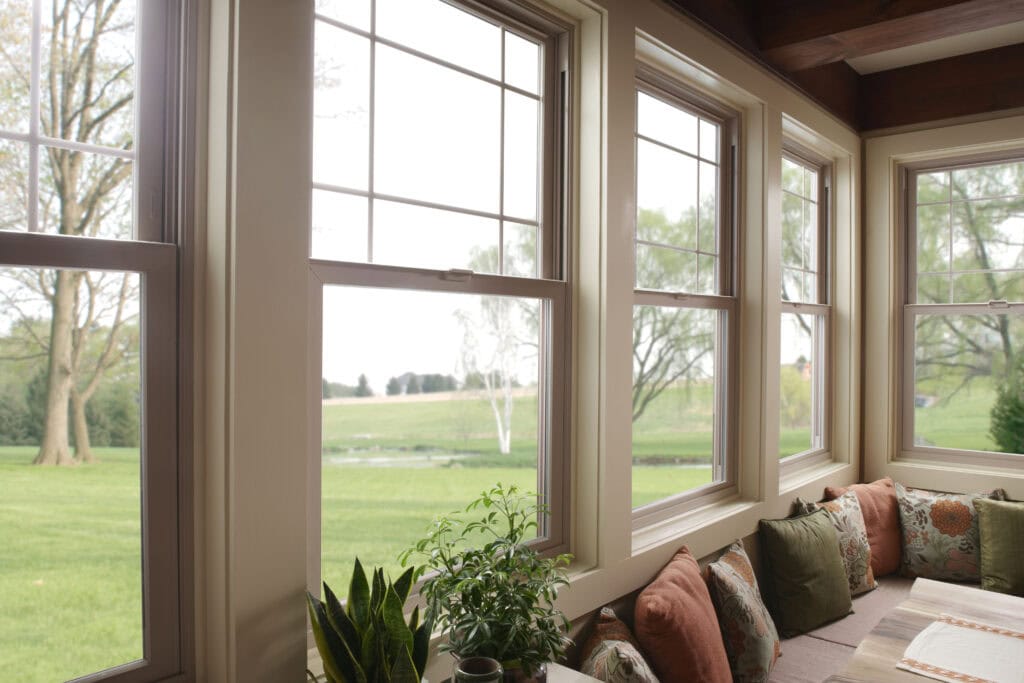There are quite a number of home improvement projects to choose from when you want to add value to your home. Not all ‘home improvements’ will add value though – that is resale value but they may add comfort as well as other benefits. Even if something adds value to your home this doesn’t mean that you will be able to get your asking price as in a down market selling a house can be very difficult especially if it is more expensively priced.
Energy Efficiency of New Windows
Most buyers want homes that are energy efficient and windows is one way to add to the energy efficiency of a home. Not only will these types of windows in demand but they also look good and can save you $500 in cooling and heating costs per year.
Most homeowners who are looking to renovate or do some sort of home improvement tend to turn to the popular television channel HGTV for ideas and tips. HGTV estimates that adding energy efficient windows to a home can have you getting back 60 – 90 % of the cost. There is also the green energy tax credit which provides you with 10% of your purchase price if you upgrade your windows with new Energy Star rated windows. Your utility company or your state could also have various credits that you can be eligible for once you add energy efficient windows to your home. You can find out all about the rebates that are available in your area from the Energy Star Rebate Finder. What this is, is a database that you can search through that will provide you with information that is specific to your state. If you find rebates along with your yearly savings that equal several hundreds of dollars then a window replacement or addition could be a good way to add value to your home.
Window Types
The types of windows you choose are also a factor that affects whether or not you will get added value after installation. For example standard windows may only add value in certain cases. For instance if your present windows are in bad condition, having loose or damaged panes or with sashes that are a pain to operate or are simply inoperable then you will definitely get a higher return for your windows. However if your current windows are in good condition your rate of return may be lower. It all depends really so there is no simple yes or no answer to this question.
Even if you don’t add much value to your home by adding windows you will still be able to benefit from the new windows in terms of comfort and even energy savings. This is especially true when your old windows are not properly sealed and are very drafty. These types of windows cause a loss of heat as well as a loss of money with high energy bills because so much of your heating or cooling is going outside.
If you are building a new house then you definitely should invest in energy efficient windows as in such a case they definitely will add value to your home.
What Should You Look for in a Window?
- Look at the U-Factor of the window, what this is, is the inverse of the R-Value. A window with a U-Factor of zero would be the absolute best as this window would let no heat through. U-ratings of less than 0.35 are good options as well.
- Look at the shading coefficient (SC) of the window. Window with lower SC ratings are good for hot climates where you want to block out most of the heat from the sun. On the other hand windows with a high SC rating are good for colder climates when you want to let in some heat from the sun.
- Look at the Solar Heat Gain Coefficient (SHGC) of the window. This is usually 87% of the SC and refers to the amount of heat that is absorbed by the glass in the window.
- Look at the visible transmittance of the window. This refers to the amount of light coming from the outside that the window will block. Tinted windows tend to have lower transmittance.
- Look for low-e glass windows. Windows with this coating are good for reflecting heat while transmitting light. As such low-e glass as a better R-value.
- Look for air leakage ratings of windows. This gives you an idea of just how much air will be passing through gaps in the window’s make-up. The rating tells you how much air passes through per square foot of the window and the measurement given is in cubic feet.







